Merritt Island National Wildlife Refuge, home to hundreds of bird species, is a paradise destination for birders from all across the country. It is only 10 miles from Cocoa Beach and about an hour east of Orlando. If you happen to be visiting central-East Florida, I would highly recommend a visit!
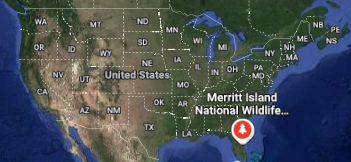
I have only just begun learning about birds since we began our #vanlife adventure a few months ago, but I have certainly developed an interest and could easily see myself becoming a hobbyist. Our time at Merritt Island National Wildlife Refuge (MINWR) really amplified my enthusiasm, and sparked my desire to learn more about these amazing feathered creatures.
In this blog, I will share the photos I took at MINWR, and share what I’ve learned about each bird.
Great Egret
Commonly seen in temperate and tropical habitats worldwide, these beautiful birds like to hang out in freshwater and saltwater marshes, lakes, ponds, streams, and mudflats. They are easily identifiable by their large, tall, all-white bodies, long, yellow bills, and long black legs. They can grow up to 4 feet tall, and have a wingspan of more than 50 inches!
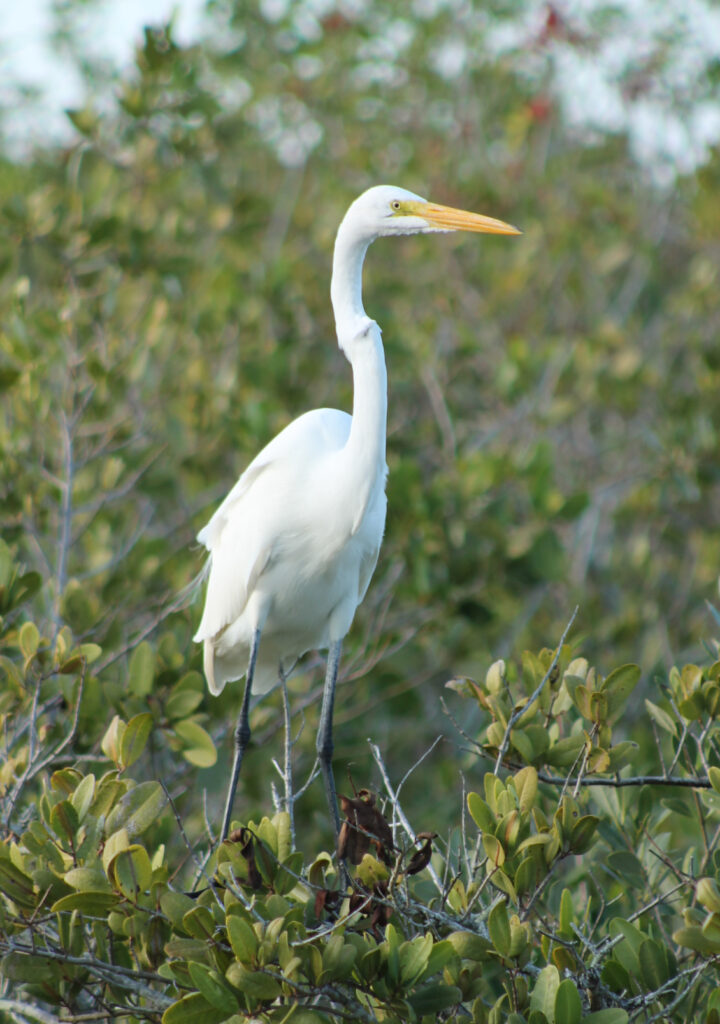
They wade in the water and forage for their food. They especially love to eat fish (which they swallow whole), but they also eat frogs, shrimp, snakes, and small mammals.
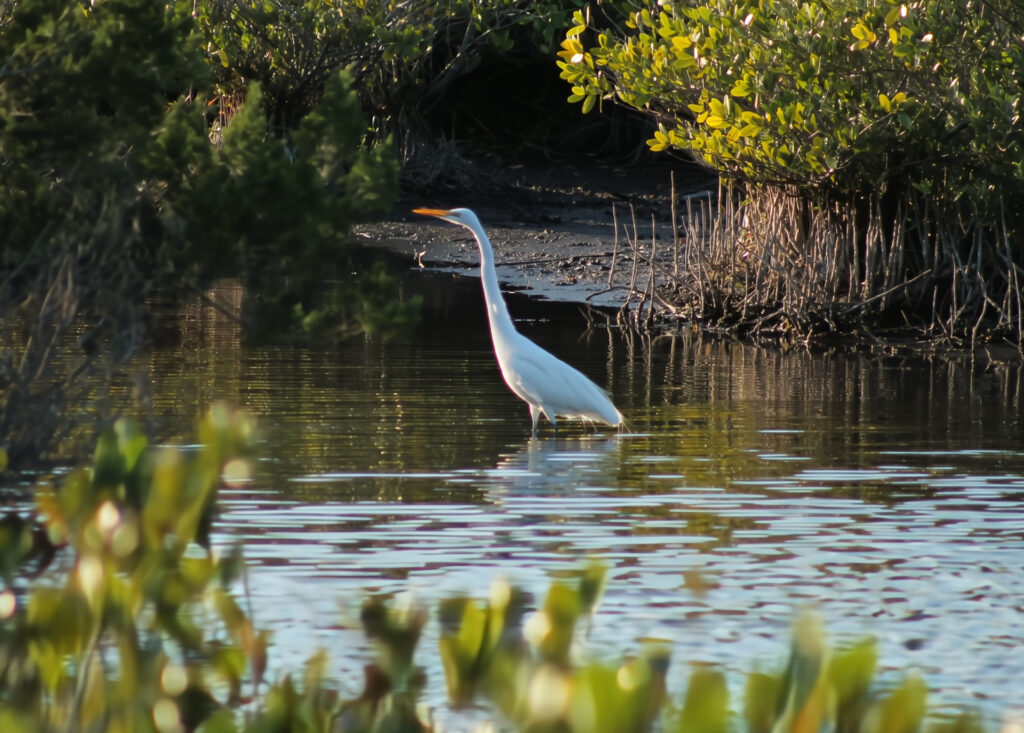
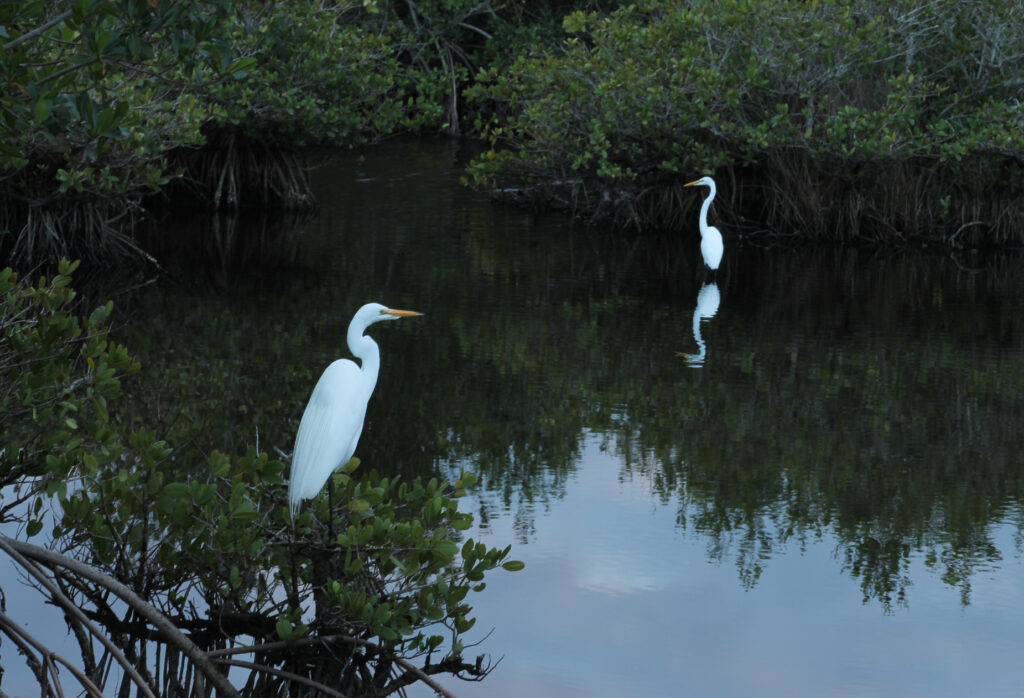
They also like to hunt in grassy areas and fields.
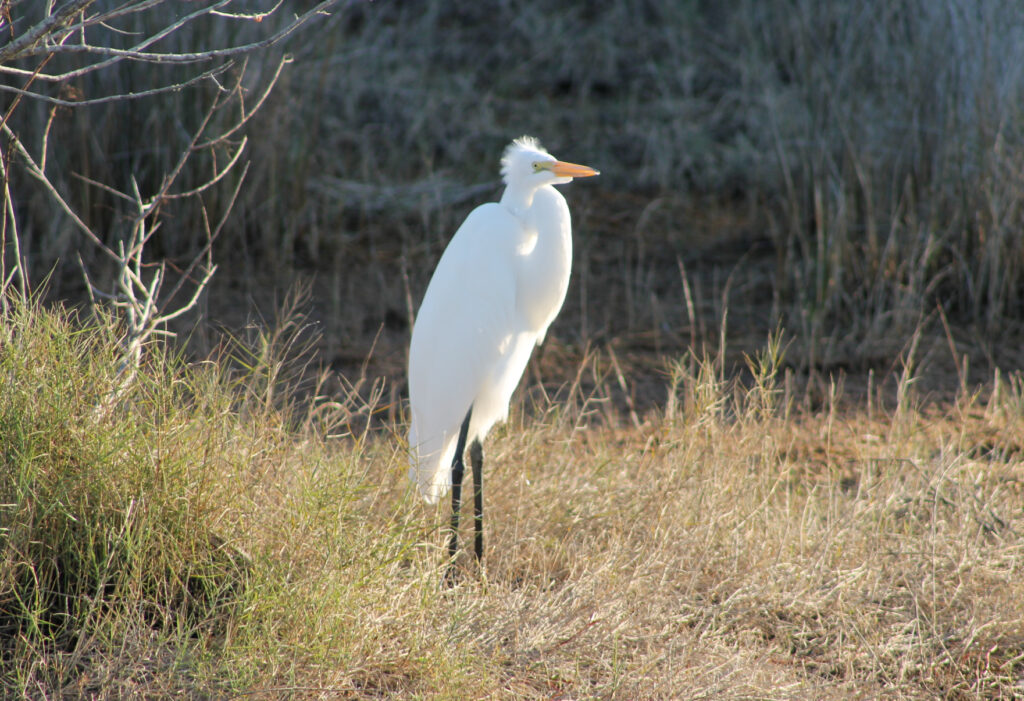
They are very easy to spot, though, which makes them a target for predators, such as owls, hawks, raccoons, coyotes, and even snakes. Please be safe out there, egrets!

Snowy Egret
A close relative to the Great Egret is the Snowy Egret. They look very similar to the Great Egret, but have a few key distinguishing characteristics. Snowy Egrets are smaller and have a more slender bill than Great Egrets. Snowy Egrets can grow up to 26 inches tall with a 39 inch wingspan. Bill and feet color are the key differentiators, though. Great Egrets have yellow bills and black feet, while Snowy Egrets have black bills and yellow feet.
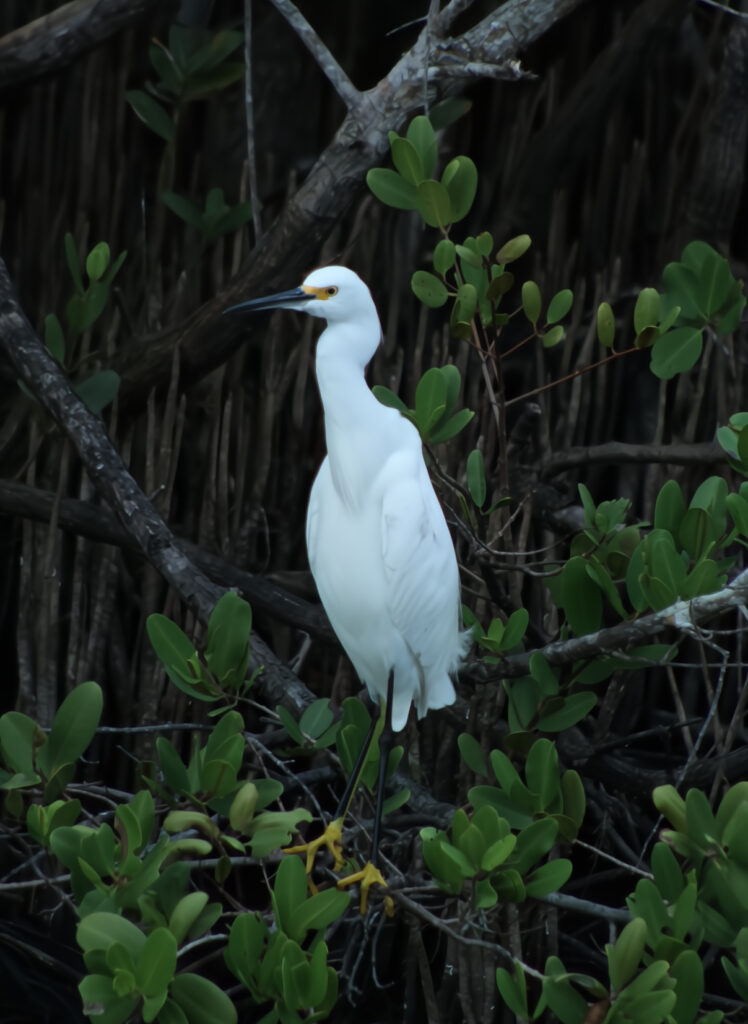
Wood Stork
To me, the Wood Stork (WS) looks very similar to both the Great and Snowy Egrets, but, I can also recognize some big differences. The WS can grow taller than a Great Egret (more than 4 feet), with a significantly wider wingspan (up to 65 inches). The WS has some black feathers and a short black tail. Their heads appear to be dark grey, but they are actually unfeathered and scaly. They have black bills, black legs, and pink feet.
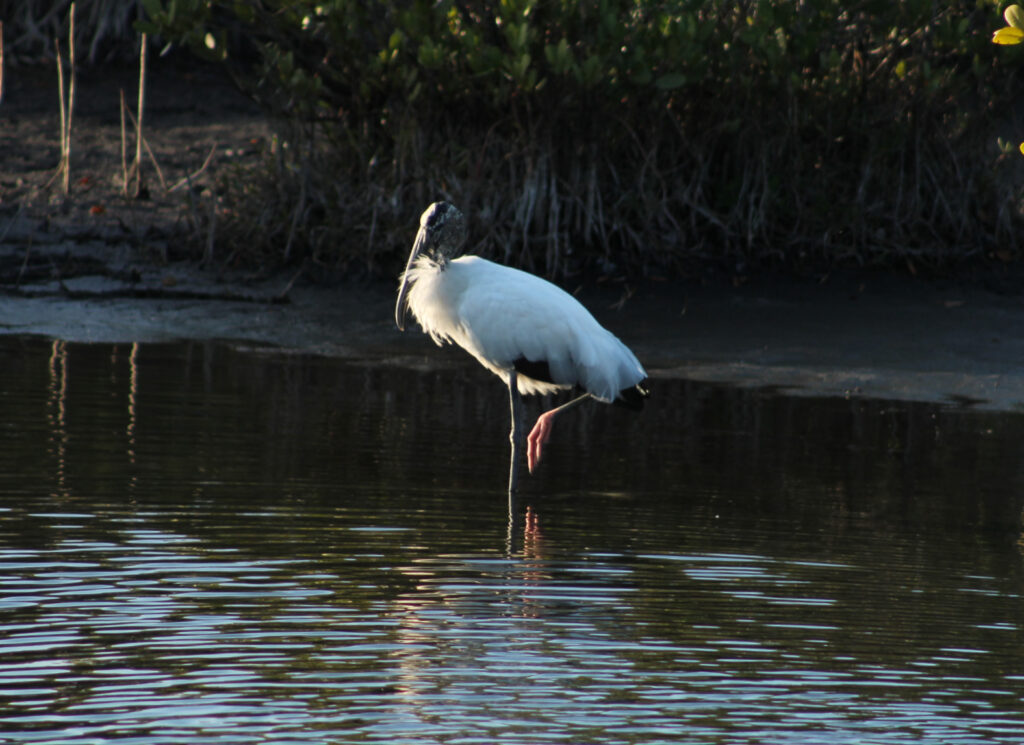
Like egrets, the Wood Stork is a wading bird who loves to eat fish and crustaceans. They also love to be social, so you can often find them foraging with other bird species. Here’s a test for you: What kind of egret is seen below with the Wood Stork?
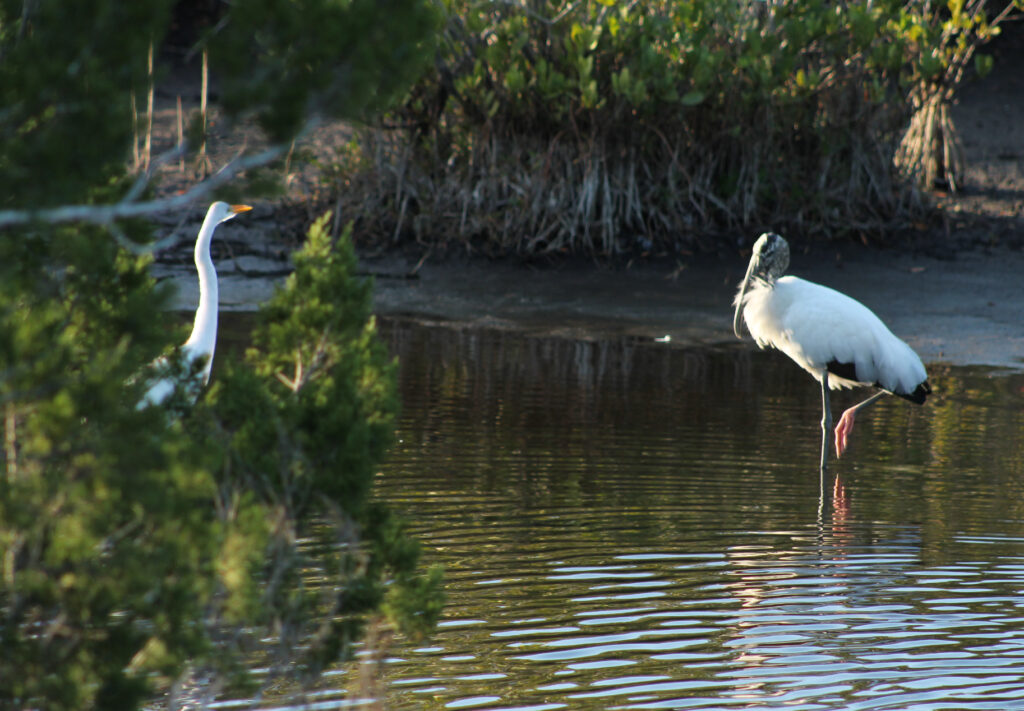

Fun fact–Wood Storks are the only species of stork that breed in the United States–typically found in nature preserves along the coasts of Florida, Georgia, and South Carolina.
White Ibis
Guess what? The White Ibis is also a wading bird, and has many similarities to the egrets and wood stork I photographed. They can grow up to 2 feet long and have wingspans up to 3 feet wide. Their bodies are shaped like a football, and they weigh around 2.5 pounds.
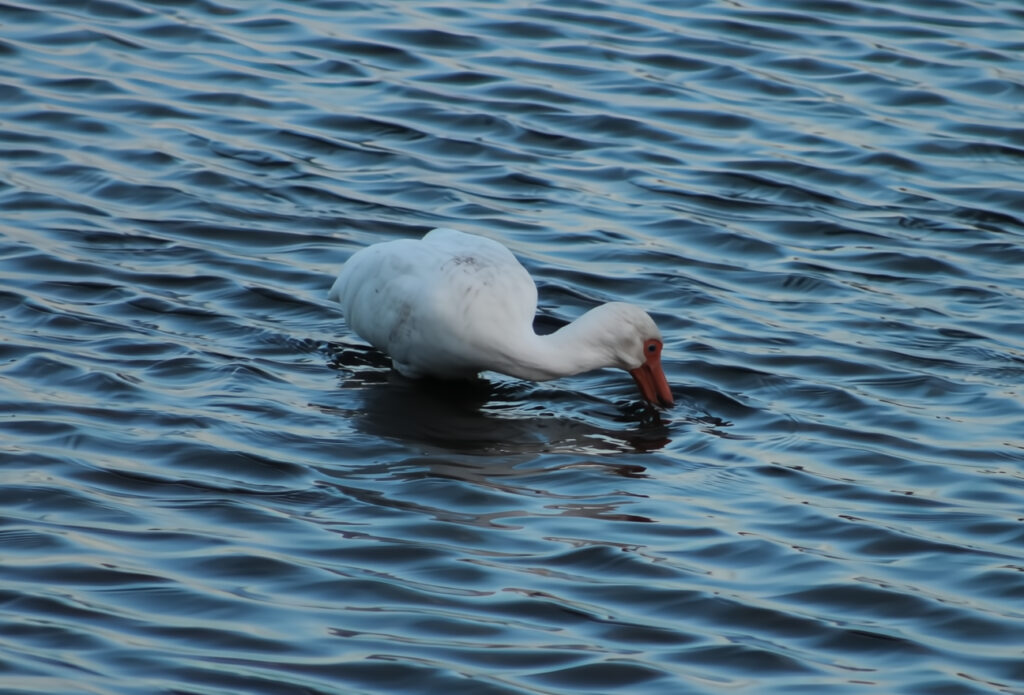
They have bright red/orange legs and curved red/orange bills. They mostly eat insects and crustaceans.
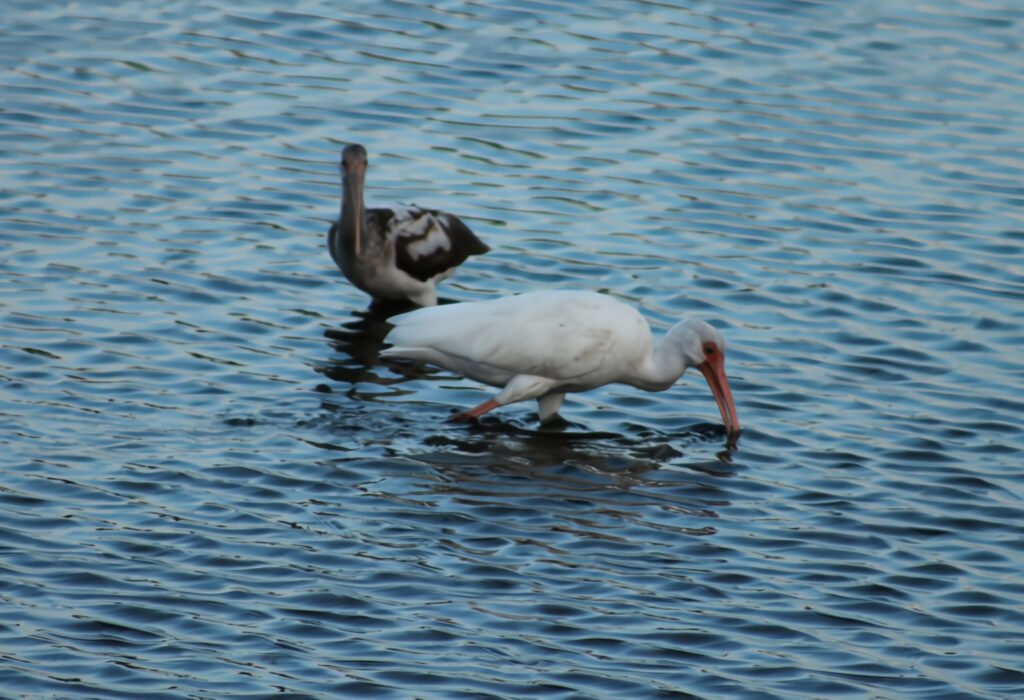
They are also very social birds, and like to forage, fly, and nest in groups.
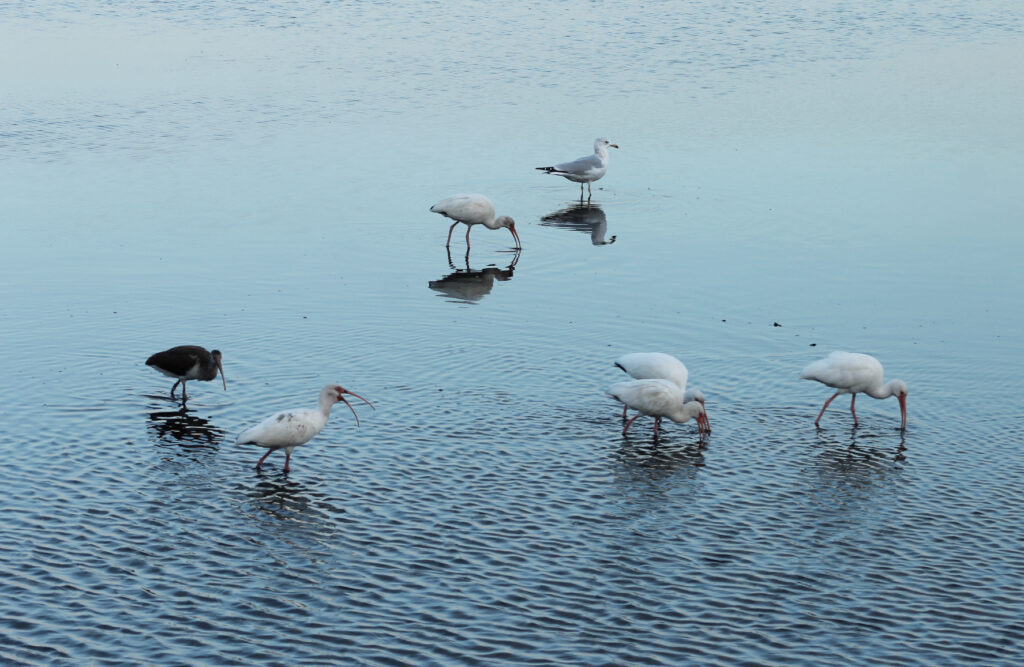
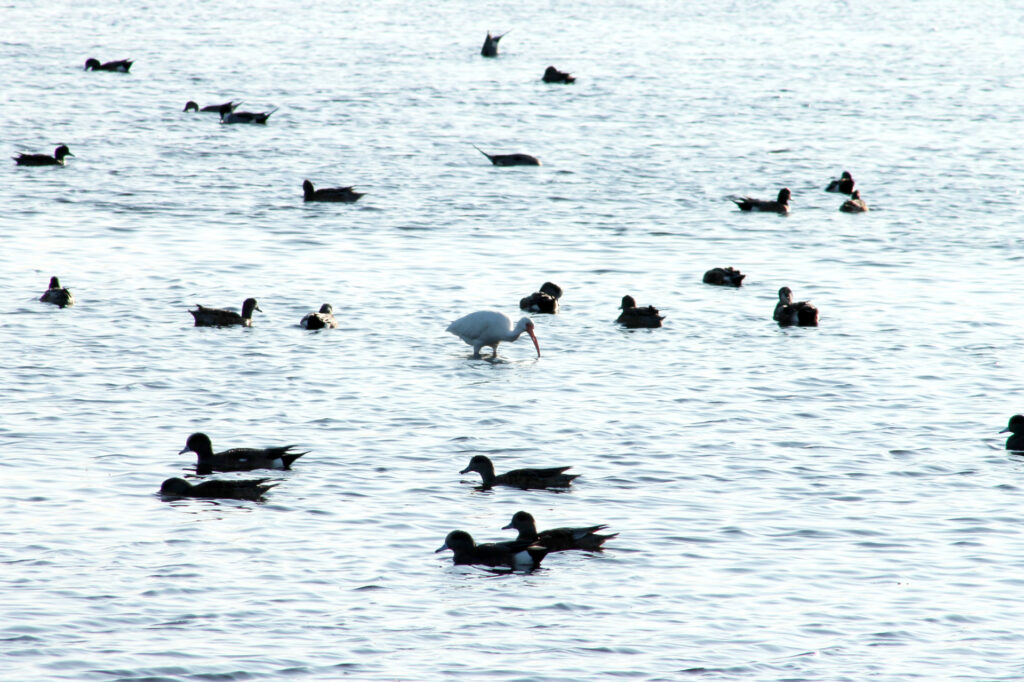
Roseate Spoonbill
It is easy to see how this bird was named–because of its rosy color and bill that looks like a spoon! Roseate Spoonbills are often seen near White Ibis because they like to forage for similar foods–mostly insects, crustaceans, and small fish. Their pink color comes from the foods they eat–loaded with carotenoids.
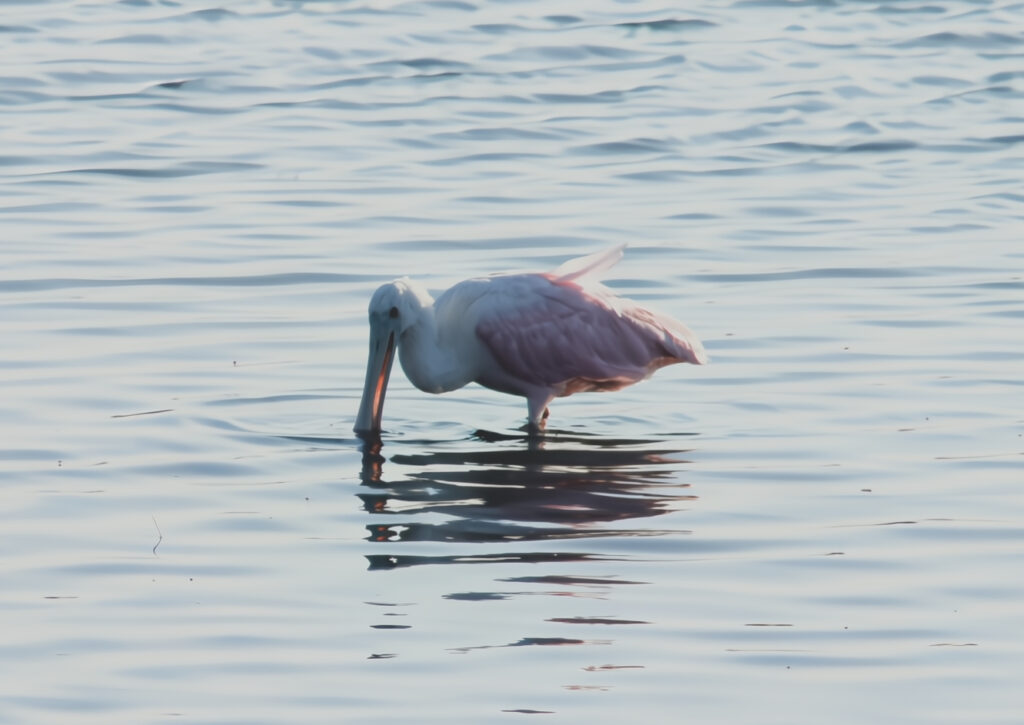
They use their spoon-shaped bills to scoop their food from shallow waters as they wade.

They can grow up to 33 inches long with a wing span of up to 51 inches. This very pink RS looks like a flying shrimp to me–I guess it’s true, you are what you eat!

Tricolored Heron
Speaking of colorful birds, this one really caught my attention–being my favorite color! It is a medium-sized wading bird, up to 28 inches long with up to a 38 inch wingspan. They have a dark blue head and upper body, a white line down their neck, and a white belly. Their bills are typically yellowish with dark grey and a black tip. Their legs are dark yellow. They mostly forage alone. (Keeping the good stuff for themselves, right?!)
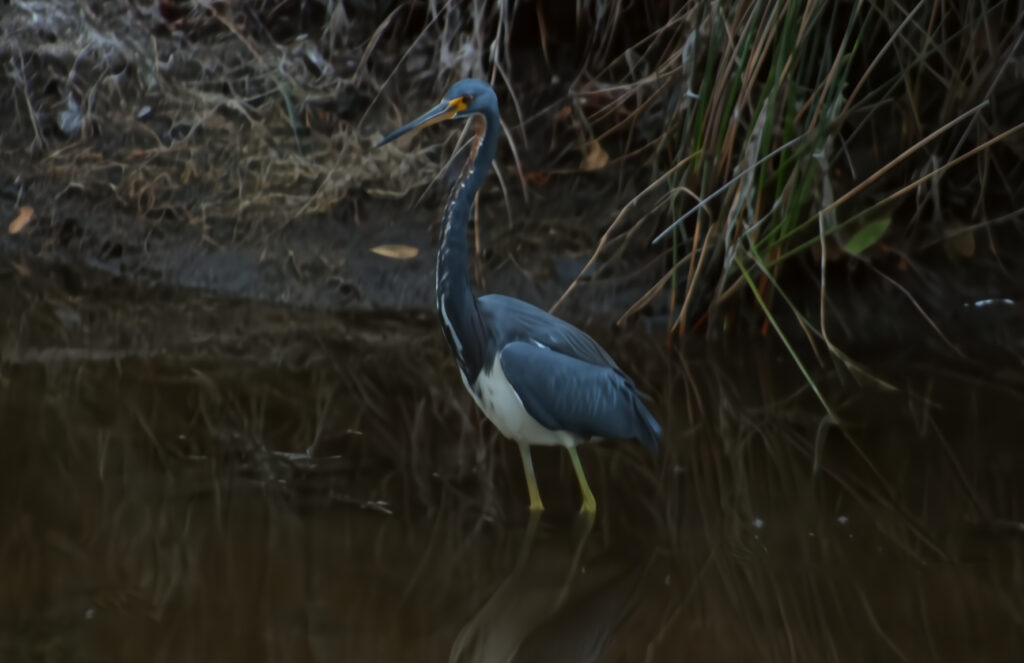
This one thought he was being all sneaky and blending in to the dark waters, but I spotted him with those bright yellow legs!
Great Blue Heron
This beautiful wading bird also caught my eye, even though he tried to blend into the dense, dark plant-life. I noticed his bright yellow eyeball, and I quickly captured his portrait. Beautiful, wouldn’t you say?
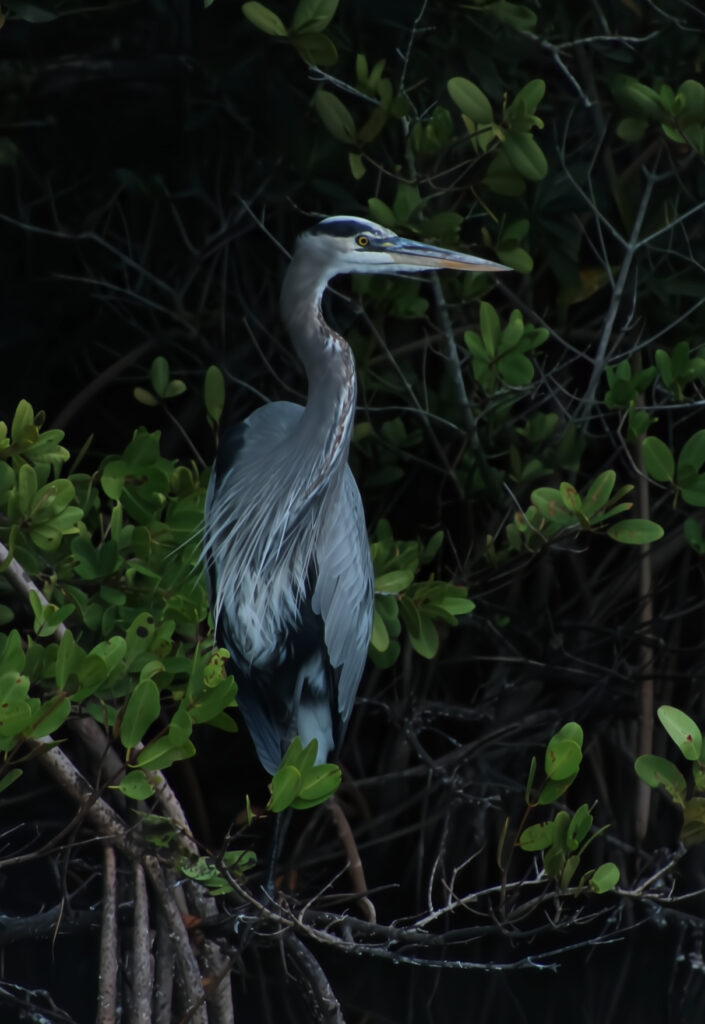
The Great Blue Heron is the largest of all the North American Herons–up to 54 inches tall, with a wingspan of up to 79 inches! They eat lots of creatures to stay that big–including insects, amphibians, reptiles, and small mammals. Keep your small dogs away, folks!
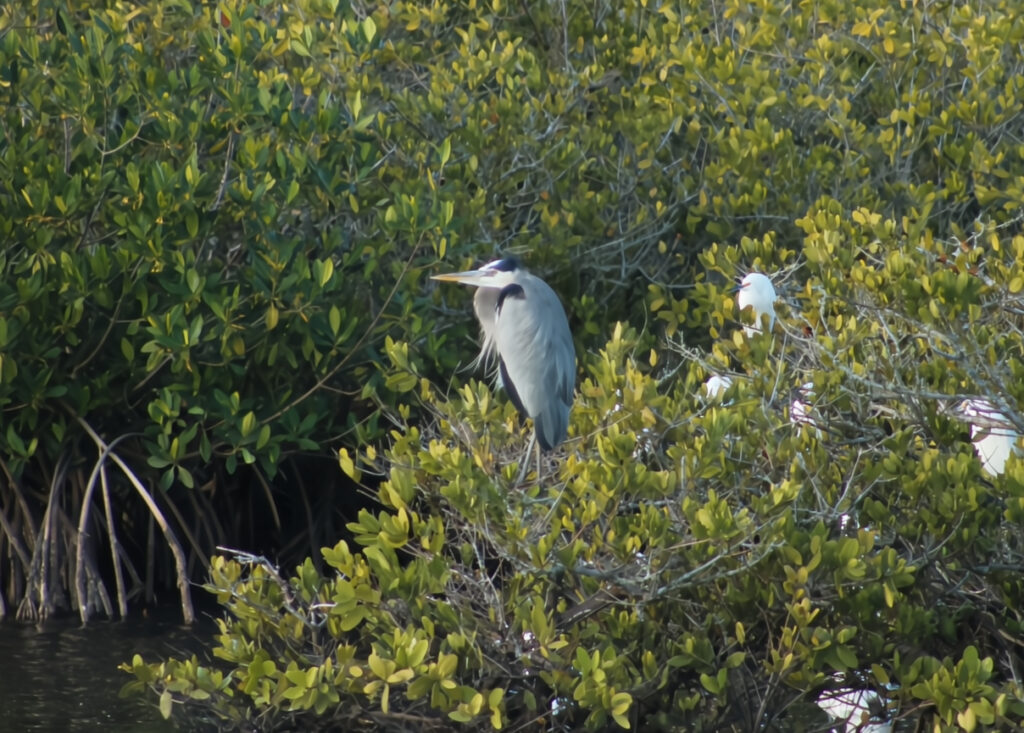
Anhinga
I saved best for last–at least my favorite bird of the day–because it sat so nicely for a portrait session for me! If I had to guess, I’d say this Anhinga was about 3 foot tall with a 4 foot wingspan.
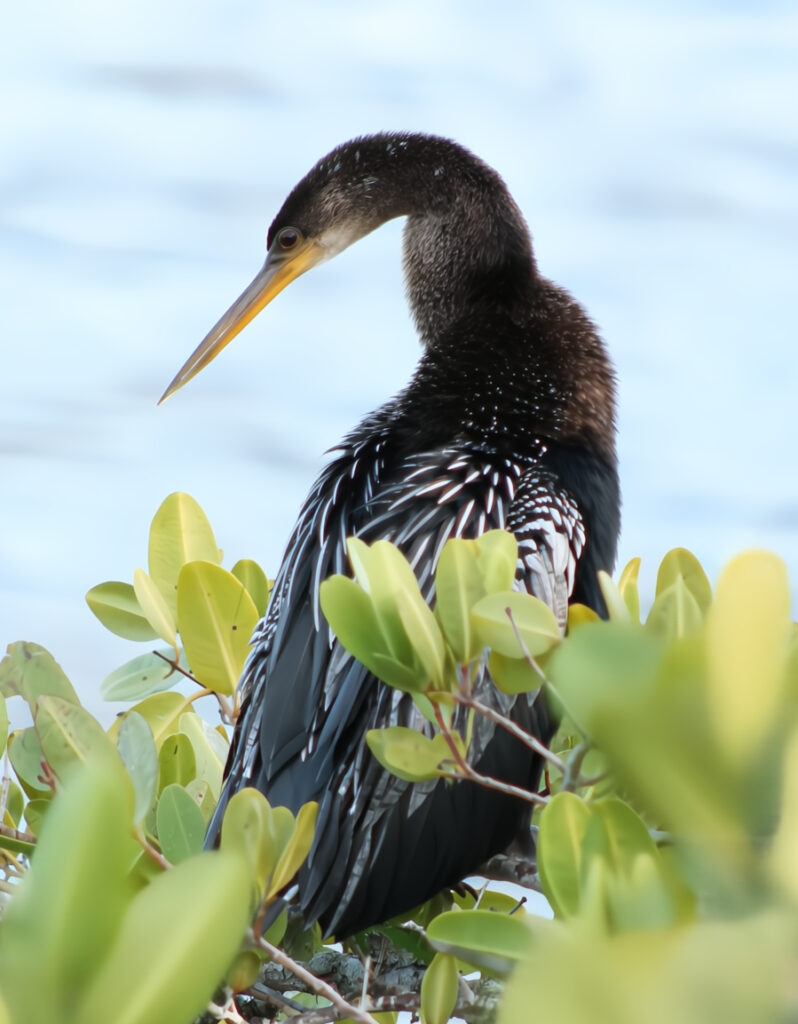
The Anhinga is sometimes referred to as the “Snake Bird” because when it is swimming, it pokes its head and neck above water and looks like a coiled snake.
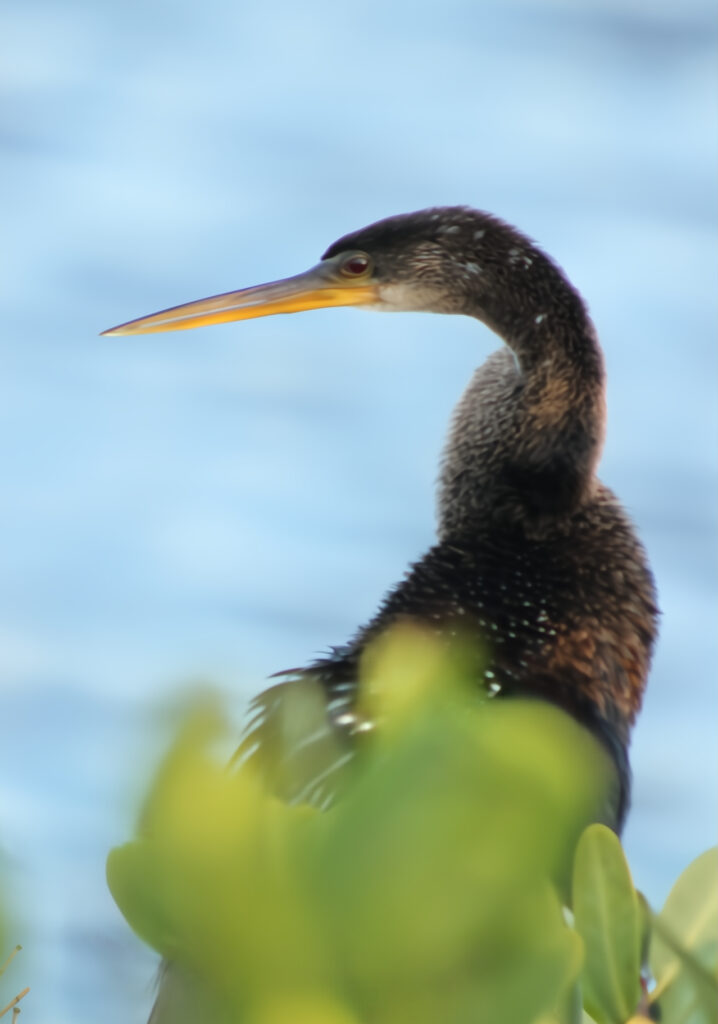
It does not have water-proof feathers, which allows it to more easily submerge its body underwater to stalk its prey. In addition to the common fish, shrimp, and amphibians that all birds like to snack on, the Anhinga loves to eat snakes and young alligators. They use their long, sharp bill to spear their prey.
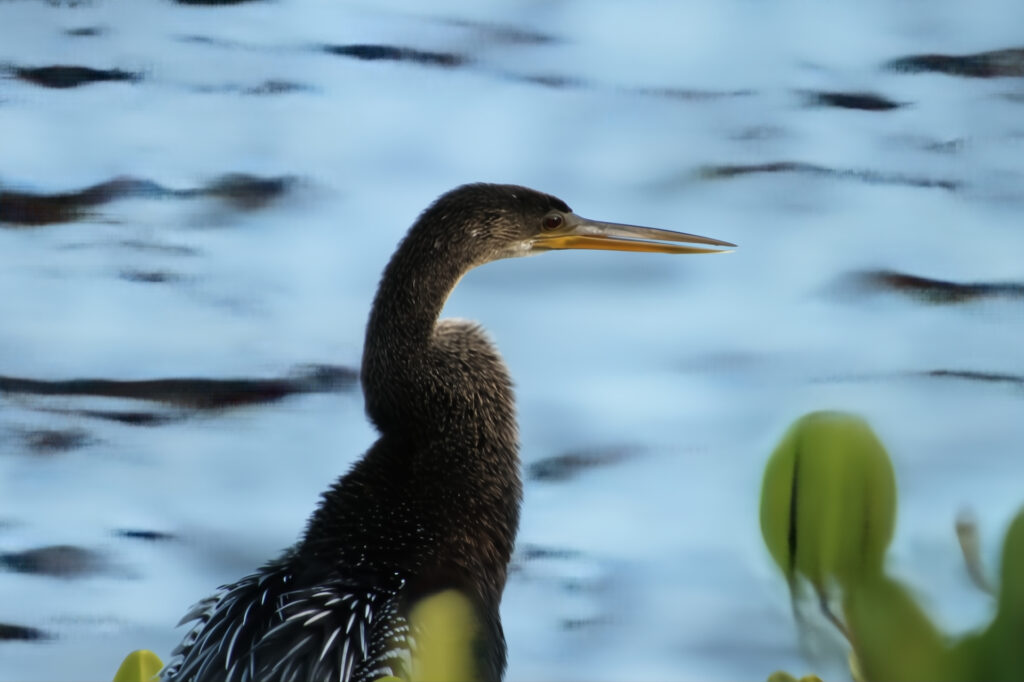
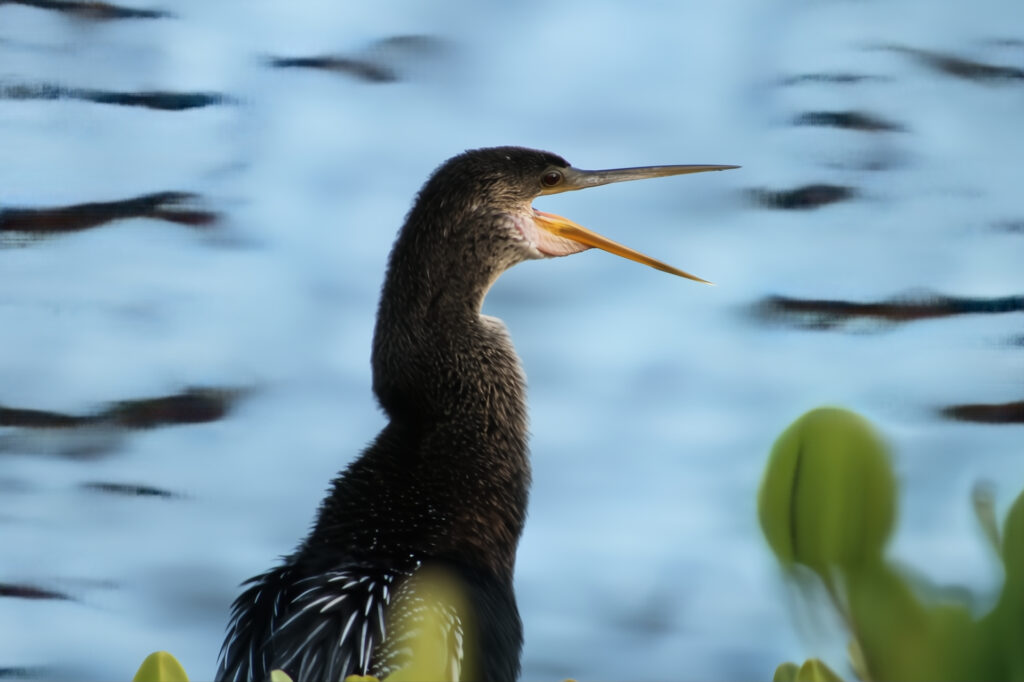
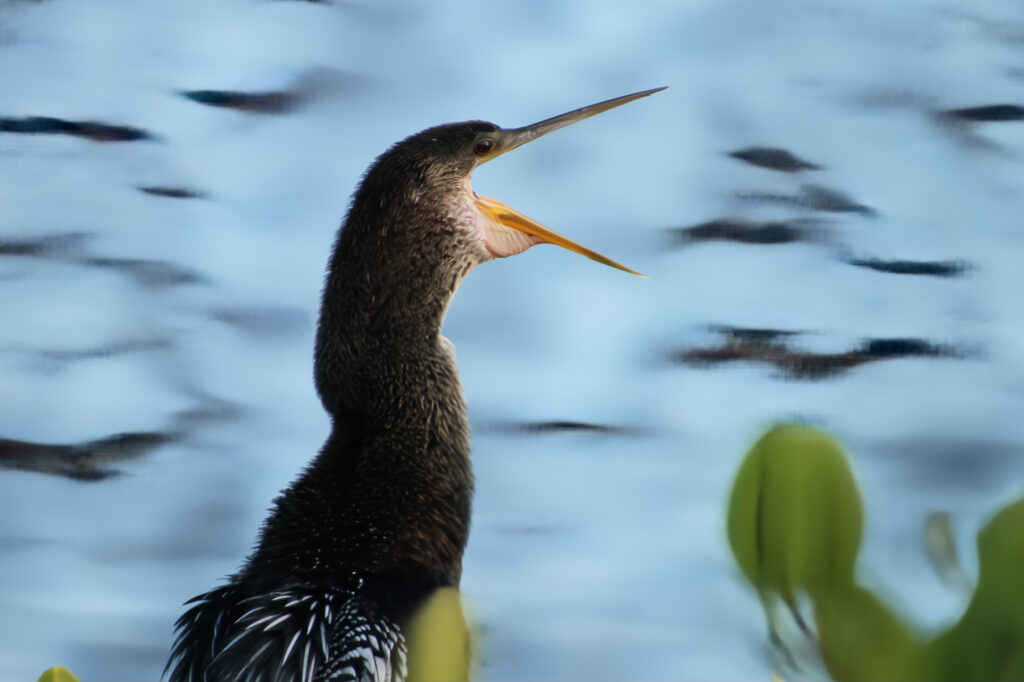
After swimming, the Anhinga perches on a tree branch or rock to dry–which must have been what was going on when I photographed him–he was just drying off!
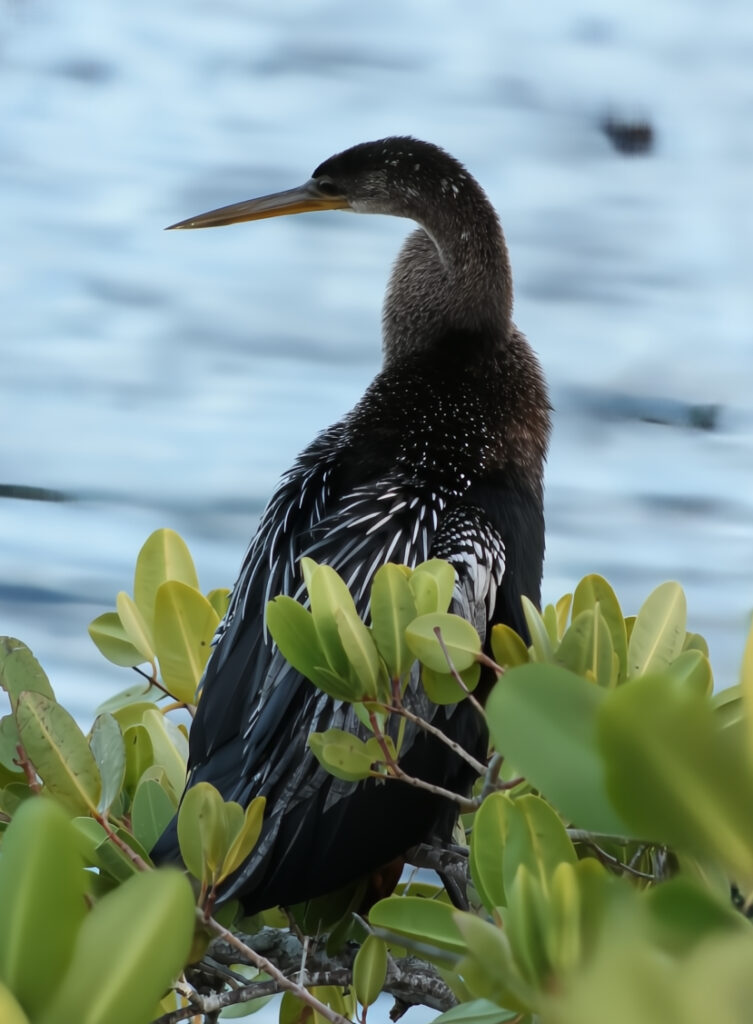
Sunsets Are For The Birds
We watched hundreds of birds gather together on the shoreline to watch the sunset. It was an indescribably beautiful site that filled me with awe and wonder. I wonder if they do this every evening?
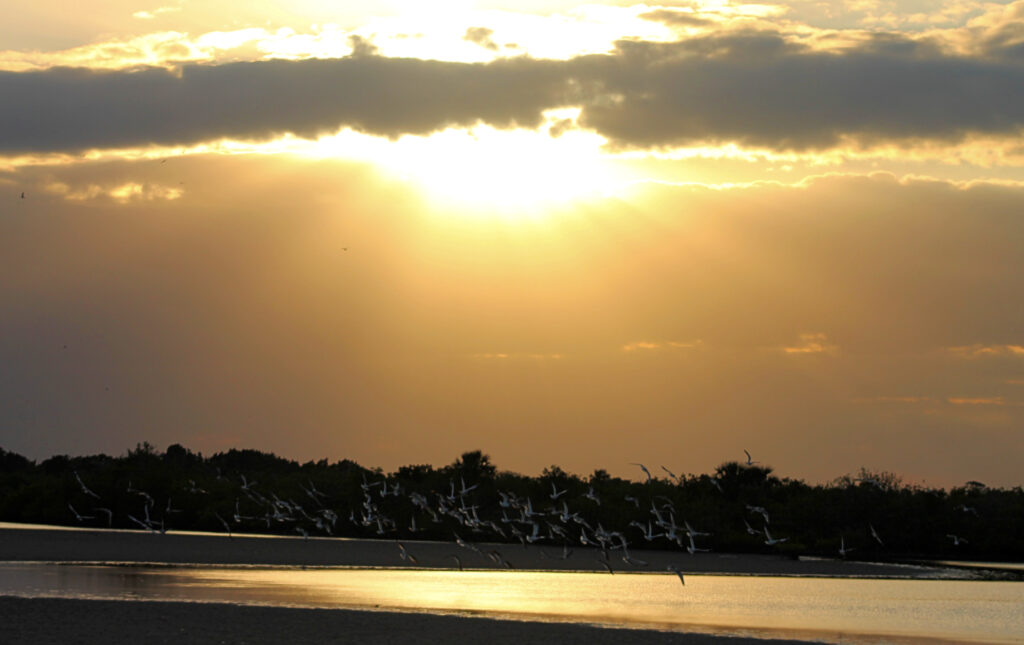
I wonder if every sunset is this beautiful.

I wonder how Dan took a better photo on his iPhone than I did with my professional camera?
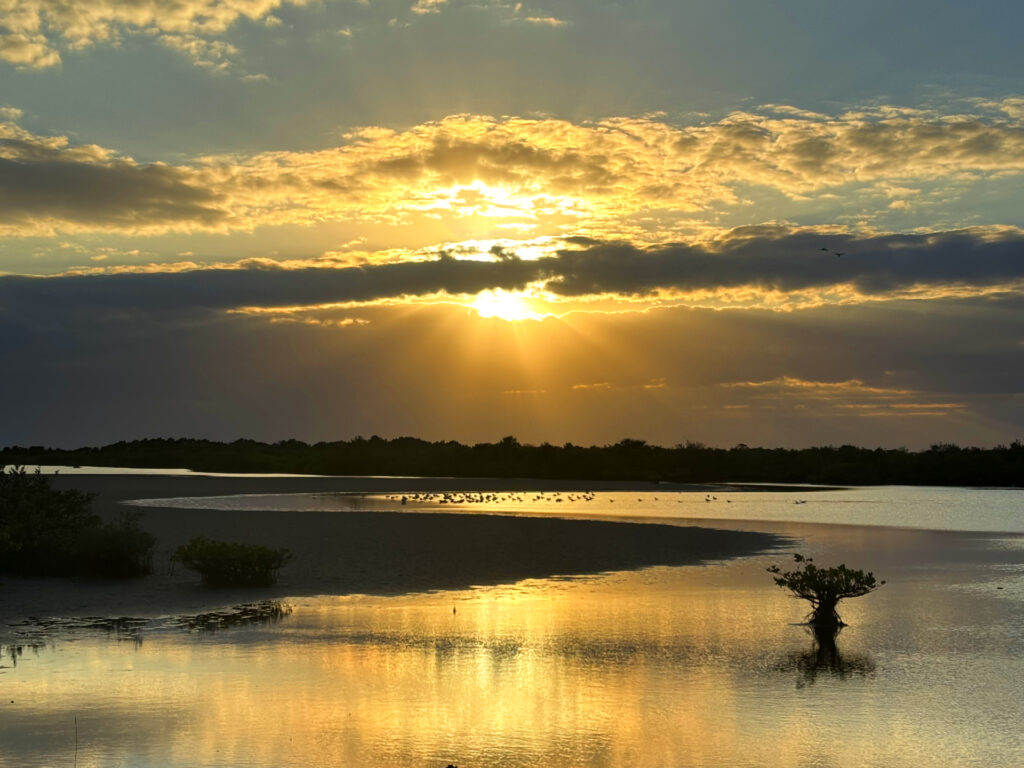
I wonder if you enjoyed this blog post about birds. If so, leave me a comment below.
Until next time!
XOXO,
Joanna

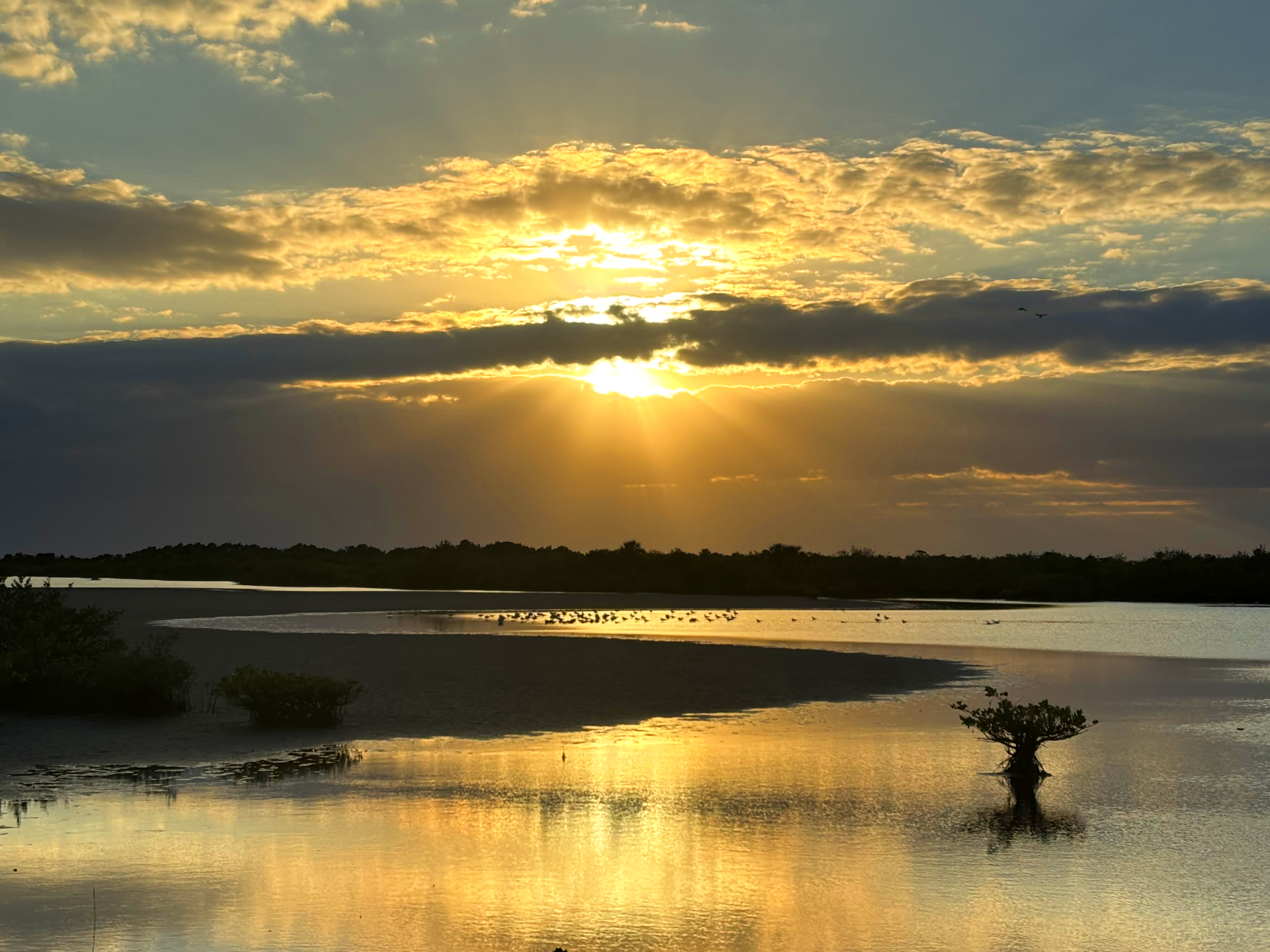
Leave a Reply